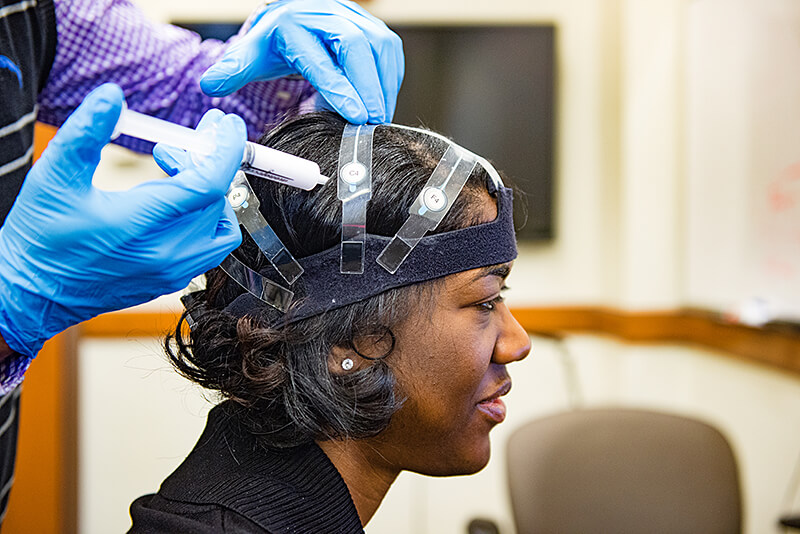
The researchers have developed two types of "classifier-based empirical trust sensor models," a step toward improving trust between humans and intelligent machines.
A YouTube video is available at https://www.youtube.com/watch?v=Mucl6pAgEQg.
The work aligns with Purdue's Giant Leaps celebration, acknowledging the university's global advancements made in AI, algorithms and automation as part of Purdue's 150th anniversary. This is one of the four themes of the yearlong celebration's Ideas Festival, designed to showcase Purdue as an intellectual center solving real-world issues.
The models use two techniques that provide data to gauge trust: electroencephalography and galvanic skin response. The first records brainwave patterns, and the second monitors changes in the electrical characteristics of the skin, providing psychophysiological "feature sets" correlated with trust.
Forty-five human subjects donned wireless EEG headsets and wore a device on one hand to measure galvanic skin response.
One of the new models, a "general trust sensor model," uses the same set of psychophysiological features for all 45 participants. The other model is customized for each human subject, resulting in improved mean accuracy but at the expense of an increase in training time. The two models had a mean accuracy of 71.22 percent, and 78.55 percent, respectively.
It is the first time EEG measurements have been used to gauge trust in real time, or without delay.